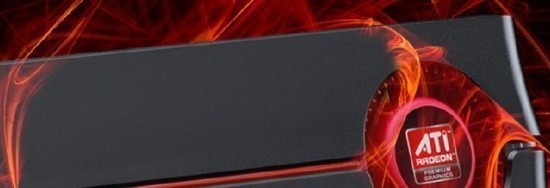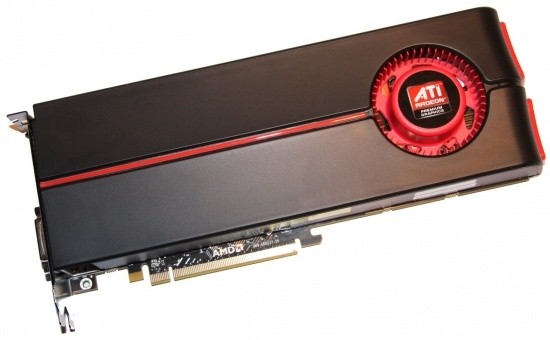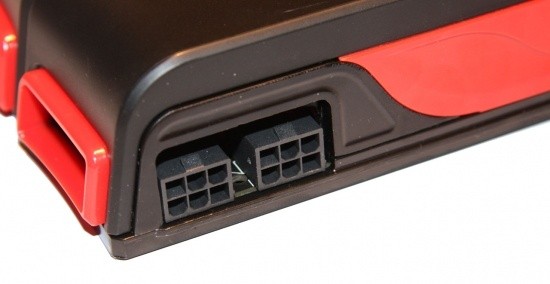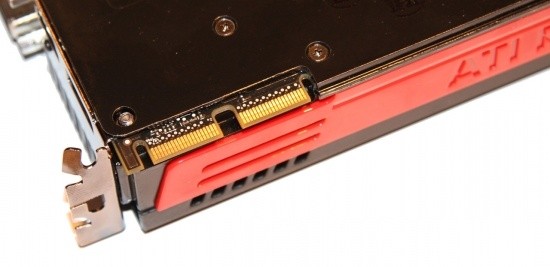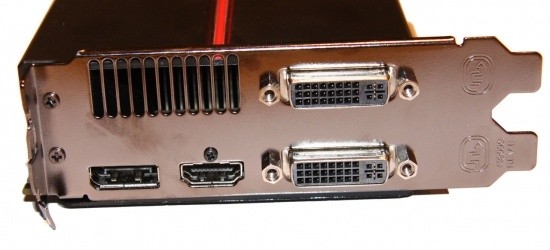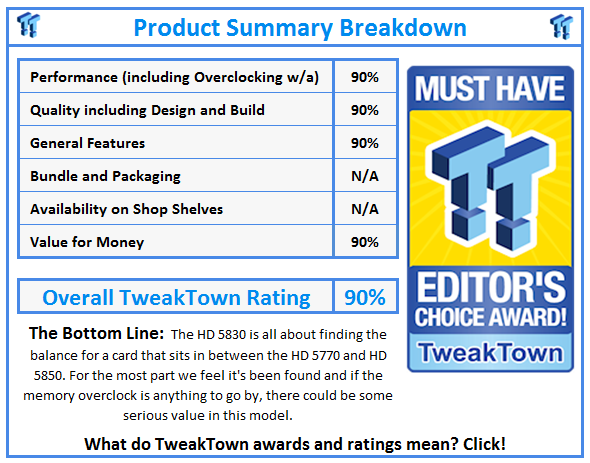Introduction
While ATI have clearly cemented the series into our minds ranging from the office orientated HD 5400 series to the dual GPU wielding HD 5900 series, it's clear that there's some models left out. You have to wonder if a HD 5650 is coming along with other models like the HD 5550.
What was clear over the past few months was the lack of a model to sit between the HD 5770 and HD 5850 in terms of price. The jump from the HD 5770 and HD 5850 in terms of performance was also quite large. The HD 5830 was rumored and after some delays the model is finally born.
We're not too sure how stock is going to be at the moment, though. Word is that supply is short and distributors aren't getting the stock they want. What this means for you is that while the model is out, we're not too sure how you're going to go in buying it.
Let me be clear; this isn't a paper launch. I know for a fact that stock has gone out to distributors. People will be able to buy the HD 5830 today. The question is, how far will it sit from the actual MSRP? And if you wait a few days after launch, are you still going to be able to get one? The problem is that these are questions we can't really answer. Over the coming days and weeks we'll know more. It's clear that ATI had to get this model out to reviewers before the GTX 400 series came in and began to dominate hardware websites with reviews.
Since we're dealing with a reference model of the card, there's no bundle to talk about. Instead we'll get straight into the actual card itself and see what it looks like along with the main specifications and how it compares to other models around it.
Video Card
Looking at the front of the HD 5830, it's extremely clear that it's nothing we haven't seen before with the same black cooler with red stripe and fan that's been seen on the HD 5770 and above.
It doesn't come as a surprise that the HD 5830 carries with it the same cooler design as it's been a popular offering on the HD 5850 and HD 5870 with few companies moving away from it at the moment.
No doubt we'll see companies like HIS, Sapphire, PowerColor and more attack the cooler eventually which is always nice.
At the back of the card, but across the top we have two 6-Pin power connectors that are needed to get the card up and running. Still across the top but closer to the front we of course have our two Crossfire connectors; not something we'll be making use of today, but soon enough.
The I/O department holds no surprises. We've got the same Eyefinity supporting setup we've seen on all our HD 5800 series cards which includes a single DisplayPort and HDMI connector along with two Dual-Link DVI connectors.
Specifications
Having a look below, we can see all the specifications we need. The main thing we want to know is how these numbers compare to the HD 5850 and HD 5770 which are the two models which sit either side of the HD 5830.
All three cards carry with them a 40nm core as you would expect. The HD 5830 like the other HD 5800s carries a 2.15B transistor count which is up from the 1.04B on the HD 5770. As far as Stream Processors / Shaders go, the HD 5830 has 1120, the HD 5850 has slightly more at 1440 and the HD 5770 a fair few less at 800.
Texture units for the HD 5830 come in at 56 which is as you would expect, in between the HD 5770 which has 40 and HD 5850 which has 72. The other big number is the ROPs; while the HD 5850 carries with it 32 like the HD 5870, the HD 5830 carries only 16 like the HD 5770.
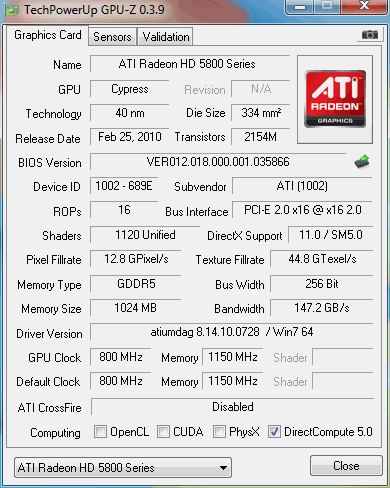
While all three models carry with it GDDR5, the HD 5770 offers a default clock of 4800MHz QDR which is up on the HD 5850 and HD 5830 which both carry a default 4000MHz QDR clock. 4000MHz QDR wasn't the original clock for the HD 5830. As you can see above, the card we received carried with it a 4600MHz QDR clock. Since this differed to the Press Deck document, I asked ATI and they let us know that a new BIOS had come out.
The big feature on the HD 5800 series is the 256-bit bus as opposed to the HD 5770 and its 128-bit. As for the core clock, that comes in at 800MHz which is down from the HD 5770 but up on the HD 5850 and its 725MHz. The main thing to remember is that while the HD 5850 does have a lower memory clock and core clock, it does have double the ROPs and more stream processors.
The model really sits exactly where you would think it does, smack bang in the middle of the HD 5770 and HD 5850. Unlike the HD 5570 which was in between the HD 5450 and HD 5670, but leant much more towards the HD 5670, this model should perform bang smack in the middle of the two either side of it.
Test System Setup and 3DMark Vantage
Test System Setup
Processor(s): Intel Core i7 920 @ 3.8GHz (190MHz x 20)
Cooling: Noctua NH-U12P (Supplied by Noctua)
Motherboard(s): GIGABYTE EX58-UD5 (Supplied by GIGABYTE)
Memory: 3 X 2GB Kingston Hyper X PC3-16000 2000MHz DDR CL9 (Supplied by Kingston)
Hard Disk(s): Western Digital 300GB Velicorapter (Supplied by Western Digital)
Operating System: Windows 7
Drivers: ATI Catalyst 10.2, Cypress LE BETA driver.
When it came to comparing the HD 5830, the decision in what to compare it against was pretty easy; the current flock of ATI cards that sit around it which include the HD 5770 which is the model directly below it, the HD 5850 which is directly above it and the HD 5870 which is the cream of the crop from ATI when it comes to single GPU performance.
Now, since I found out about the different memory clock speed just before my last test, I thought since I spent hours benching at the 4600MHz QDR clock and being the rebel that I am who didn't want to put a BIOS on that would slow down my memory clock, I included 4600MHz QDR results. So while you'll see a bit of an overclocked HD 5830 here, the core hasn't been touched which is something we'll do in another article.
Let's get started!
3DMark Vantage
Version and / or Patch Used: 1.0.1
Developer Homepage: http://www.futuremark.com
Product Homepage: http://www.futuremark.com/products/3dmarkvantage/
Buy It Here
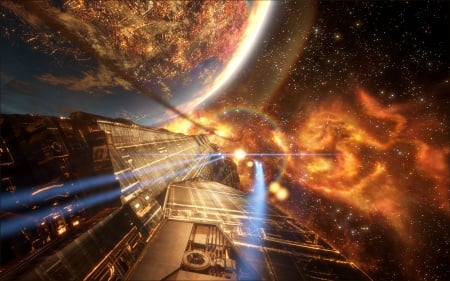
3DMark Vantage is the new industry standard PC gaming performance benchmark from Futuremark, newly designed for Windows Vista and DirectX10. It includes two new graphics tests, two new CPU tests, several new feature tests, and support for the latest hardware.
3DMark Vantage is based on a completely new rendering engine, developed specifically to take full advantage of DirectX10, the new graphics API from Microsoft.
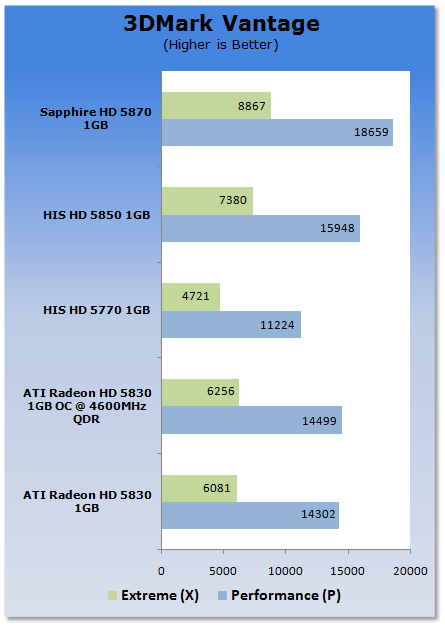
In our first test we can see that the HD 5830 manages to perform extremely well. Compared to the HD 5850 and HD 5770 it sits much closer to the HD 5850 in this particular test.
Unigine Heaven Benchmark (DX10 & DX11)
Unigine Heaven Benchmark
Version and / or Patch Used: 1
Developer Homepage: http://www.unigine.com
Product Homepage: http://unigine.com/press-releases/091022-heaven_benchmark//
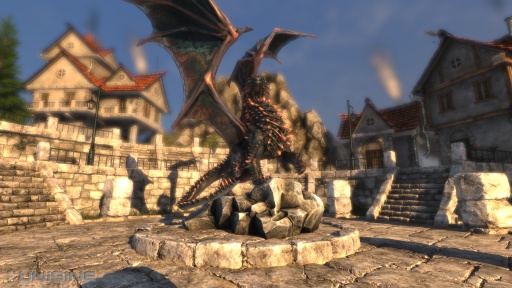
New benchmark grants the power to unleash the DirectX 11 potential in the gift wrapping of impressively towering graphics capabilities. It reveals the enchanting magic of floating islands with a tiny village hidden in the cloudy skies. With the interactive mode emerging experience of exploring the intricate world is ensured within reach. Through its advanced renderer, Unigine is one of the first to set precedence in showcasing the art assets with tessellation, bringing compelling visual finesse, utilizing the technology to the full extend and exhibiting the possibilities of enriching 3D gaming.
Note: If a card doesn't support DirectX 11 the benchmark will be left out, if it does it will be included along with the DirectX10 results.
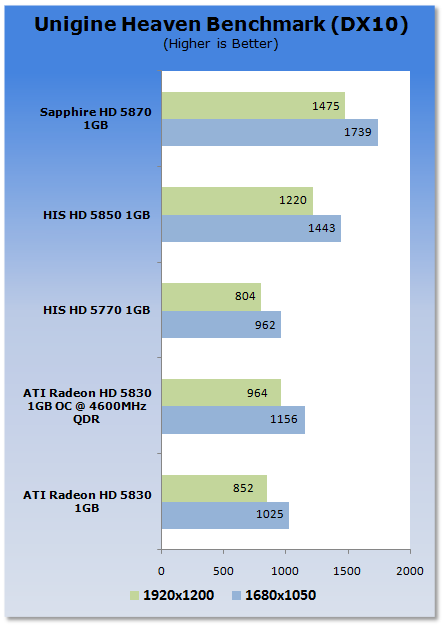
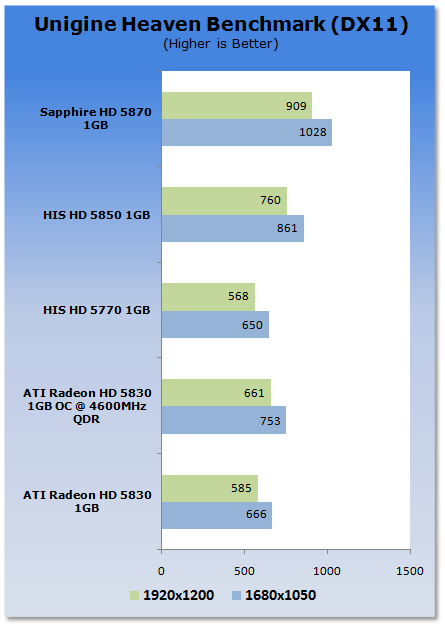
Under Heaven we can really see at the stock speeds the HD 5830 does lean very close to the HD 5770. It's interesting to see what the extra MHz on the memory does for performance under this benchmark.
Benchmarks - CINEBENCH R10
CINEBENCH R10
Version and / or Patch Used: Release 10
Developer Homepage: http://www.maxon.net/
Product Homepage: http://www.maxon.net
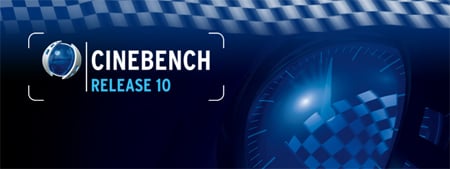
CINEBENCH is a real-world test suite that assesses your computer's performace capabilities. MAXON CINEBENCH is based on MAXON's award-winning animation software, CINEMA 4D, which is used extensively by studios and production houses worldwide for 3D content creation. MAXON software has been used in blockbuster movies such as Spider-Man, Star Wars, The Chronicles of Narnia and many more.
MAXON CINEBENCH runs several tests on your computer to measure the performance of the main processor and the graphics card under real world circumstances. The benchmark application makes use of up to 16 CPUs or CPU cores and is available for Windows (32-bit and 64-Bit) and Macintosh (PPC and Intel-based).
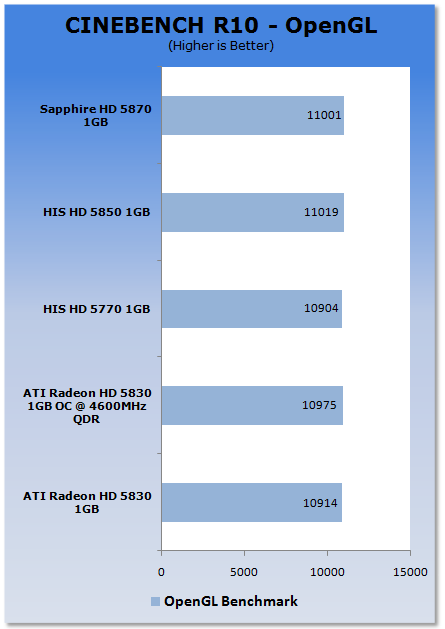
It comes as no surprise that when we look at CINEBENCH performance we see no difference at all.
Benchmarks - Resident Evil 5
Resident Evil 5
Version and / or Patch Used: Demo Benchmark
Developer Homepage: www.residentevil.com/
Product Homepage: http://www.residentevil.com/
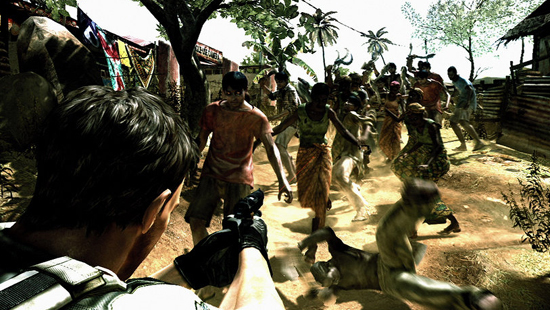
Resident Evil 5 is a survival horror video game developed and published by Capcom. The game is the seventh installment in the Resident Evil survival horror series, and was released on September 18. Resident Evil 5 revolves around Chris Redfield and Sheva Alomar as they investigate a terrorist threat in Kijuju, a fictional town in Africa.
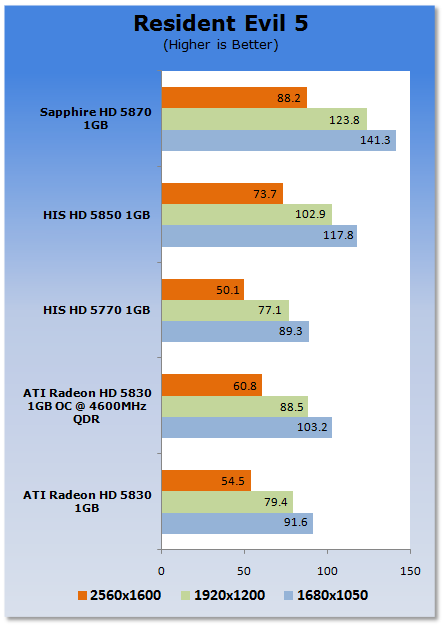
At the stock clocks the HD 5830 leans a bit more towards the HD 5770. You can see with the memory overclocked it brings performance to the center of both cards.
Benchmarks - Far Cry 2
Far Cry 2
Version and / or Patch Used: 1.01
Timedemo or Level Used: Ranch Long
Developer Homepage: http://www.ubi.com/
Product Homepage: http://www.farcry2.com/
Buy It Here
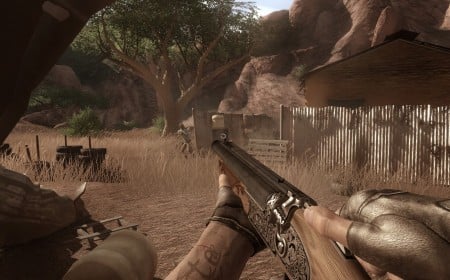
The Dunia Engine was built specifically for Far Cry 2 by the award-winning Ubisoft Montreal development team. It delivers the most realistic destructible environments, amazing special effects such as dynamic fire propagation and storm effects, real-time night-and-day cycle, dynamic music system, non-scripted enemy A.I. and so much more.
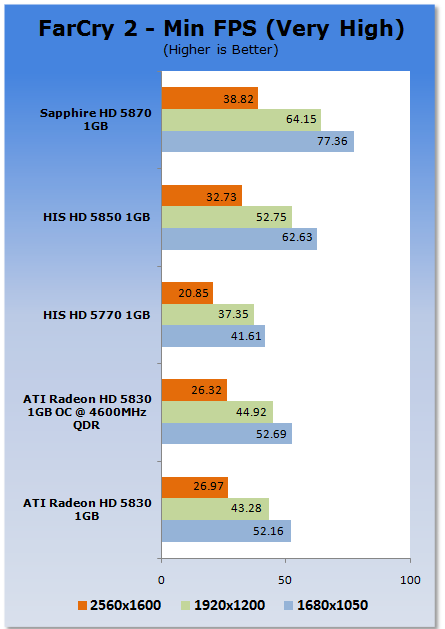
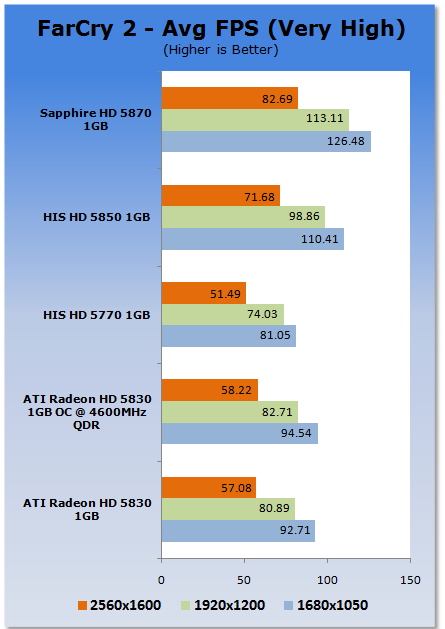
Far Cry 2 performance is strong. You can see at 2560 x 1600 unlike the HD 5850 it doesn't break that 30 FPS minimum we want to see. Compared to the HD 5770 there's a good performance bump across the board and you can see we really get a lot more breathing room at 1920 x 1200.
Benchmarks - World in Conflict
World in Conflict
Version and / or Patch Used: 1.0.0.10
Timedemo or Level Used: Built-in Test
Developer Homepage: http://www.massive.se
Product Homepage: http://www.worldinconflict.com
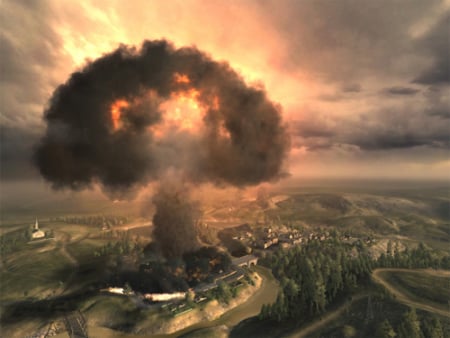
World in Conflict is a real-time strategy video game by Massive Entertainment and to be published by Sierra Entertainment for Windows (DX9 and DX10).
The game is set in 1989 where economic troubles cripple the Soviet Union and threaten to dissolve it. However, the title pursues a "what if" scenario where, in this case, the Soviet Union does not collapse and instead pursues a course of war to remain in power. It is an intensive new game is sure to put plenty of stress on even the latest graphics cards and we use the built-in benchmarking for our testing.
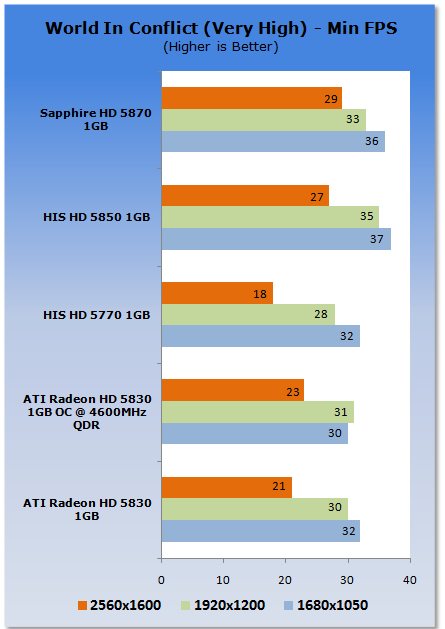
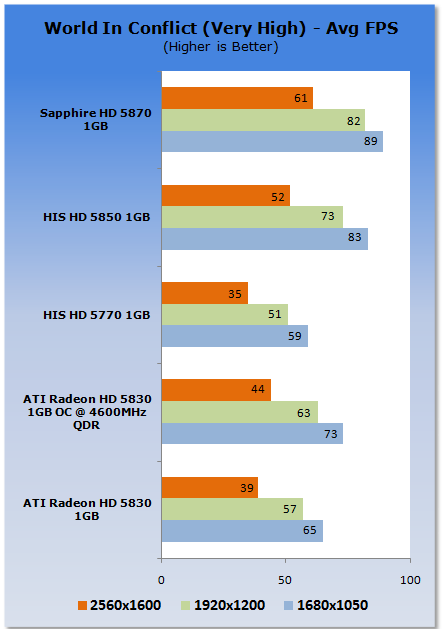
Under WIC we can see that the HD 5830 manages to break the minimum at 1920 x 1200 which is something the HD 5770 wasn't able to do. At 2560 x 1600 we see all cards really struggle; the HD 5850 and HD 5870 are clearly much closer to the 30 FPS minimum.
Benchmarks - Batman Arkham Asylum
Batman Arkham Asylum
Version and / or Patch Used: 1.1
Timedemo or Level Used: Built-in Test
Developer Homepage: http://www.batmanarkhamasylum.com/
Product Homepage: http://www.batmanarkhamasylum.com/
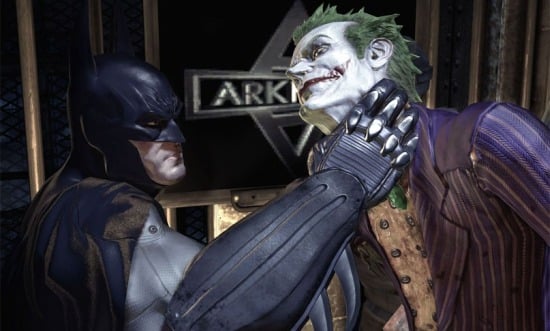
Batman: Arkham Asylum exposes players to a unique, dark and atmospheric adventure that takes them to the depths of Arkham Asylum - Gotham's psychiatric hospital for the criminally insane. Gamers will move in the shadows, instigate fear amongst their enemies and confront The Joker and Gotham City's most notorious villains who have taken over the asylum.
Using a wide range of Batman's gadgets and abilities, players will become the invisible predator and attempt to foil The Joker's demented scheme.
Batman: Arkham Asylum features an original story penned exclusively for the game by famous Batman author and five-time Emmy award winner Paul Dini, whose credits include Lost season one and Batman: The Animated Series.
Note: With support for PhysX NVIDIA based cards will be tested with the technology on and off, ATI cards will be tested with the technology off due to it not being supported on their cards.
Without PhysX
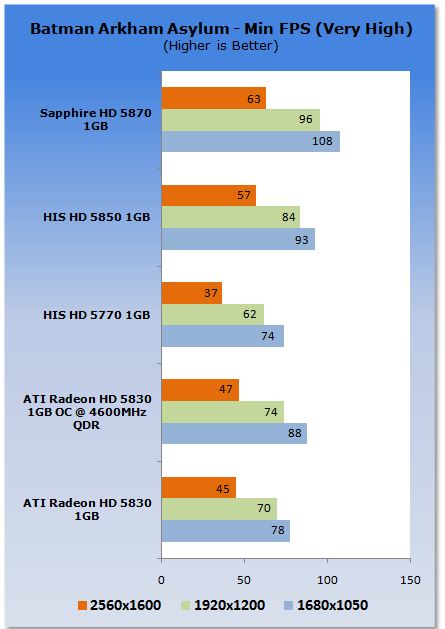
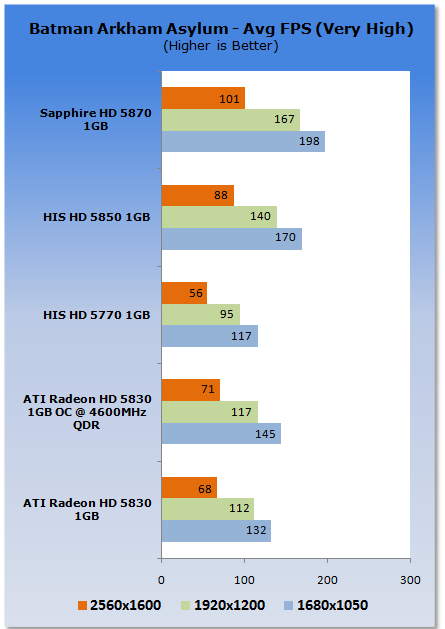
Batman AA performance is strong across the board with the HD 5770 giving us a playable framerate at 2560 x 1600. It's clear, though, that the HD 5830 improves upon these numbers, but you can see it sits almost directly in between the two cards.
Benchmarks - Darkest of Days
Darkest of Days
Version and / or Patch Used: 1.4
Timedemo or Level Used: Built-in Test
Developer Homepage: http://www.darkestofdays.com/index.php
Product Homepage: http://www.darkestofdays.com/index.php
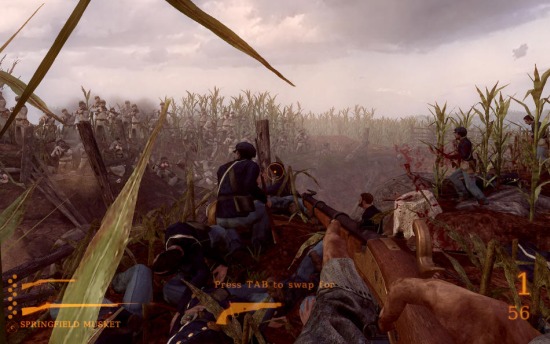
Darkest of Days takes the player through time into historic battles in an effort to save key individuals from certain death. The battles range from Custer's Last Stand at the Battle of the Little Bighorn in 1876 to fighting in Pompeii as ash and fire rain down from an erupting Mt. Vesuvius in 79 AD. Other locations include the battles of Antietam and Tannenberg, and a German World War II P.O.W. camp. There are different missions in every time period and the game takes about 4 hours to complete.
The game features over twenty weapons, both from the original time period as well as those brought back from the future. In addition, there are artillery weapons from different time periods to assist in battle.
Note: With the PhysX set to Medium or High Darkest of Days take advantage of the NVIDIA PhysX abilities. For that reason we will test ATI cards at the Low preset, NVIDIA based cards though will be tested at Low and High.
PhysX set to Low
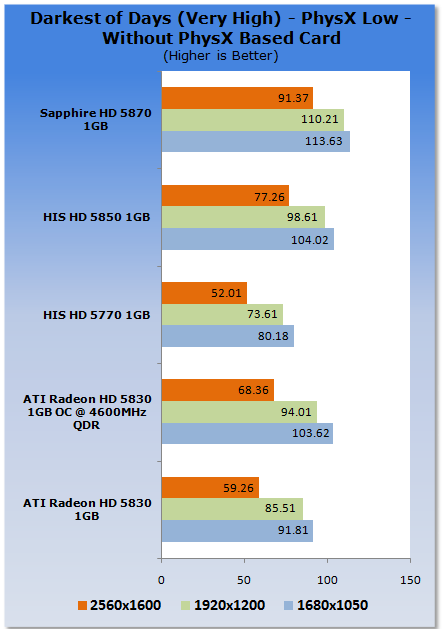
Without a minimum we want to see an average of 60 FPS. You can clearly see we're pretty much there with the HD 5830. The HD 5770 does sit a fair bit down on that number, though. Overclocked the HD 5830 screams along here, breaking well into that 60 FPS average we want to see.
Benchmarks - BattleForge
BattleForge
Version and / or Patch Used: Auto Patched at Load
Timedemo or Level Used: Built-in Test
Developer Homepage: http://www.battleforge.com/
Product Homepage: http://www.battleforge.com/
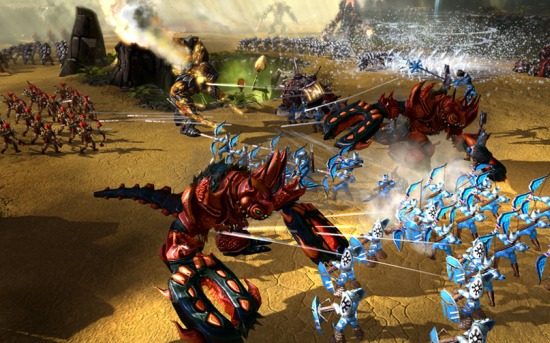
The Gods have disappeared and the old sun has died, letting a vile twilight engulf the world of Nyn. In exchange for all treasures the mortals possessed, the evil giants agreed to forge a new sun and hurl it into the sky.
But the deal was betrayed, the treasure stolen and now the mortals flee the wrath of the giants. Under the light of a new sun the mortals stumble into a world changed and twisted by an age of twilight. The long journey home has become a conquest of survival.
Note: Supporting DirectX 11 we have seperated the graphs for NVIDIA and ATI cards. While the numbers between the two brands can be compared you have to make note that ATI based HD 5000 series cards are running DirectX 11.
DirectX 11 (ATI HD 5000 Series Only)
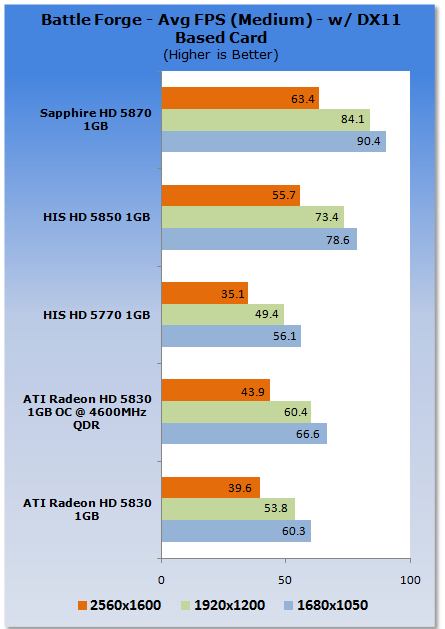
We really see a lot of cards struggle under this game. But compared to the HD 5770 the HD 5830 gets the 60 FPS average we're looking for at 1680 x 1050.
Benchmarks - High Quality AA and AF
High Quality AA and AF
Our high quality tests let us separate the men from the boys and the ladies from the girls. If the cards weren't struggling before they will start to now.
Resident Evil 5
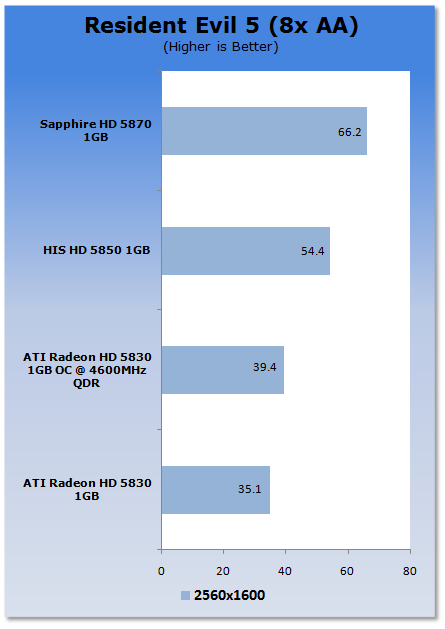
With AA and AF on we see that all cards except the HD 5870 struggle to break that 60 FPS average we need to see.
Far Cry 2
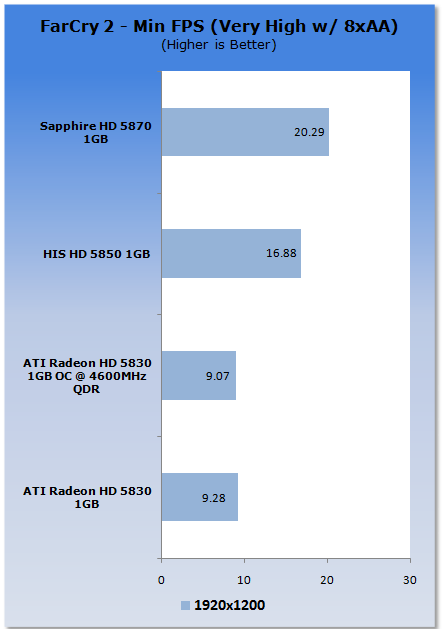
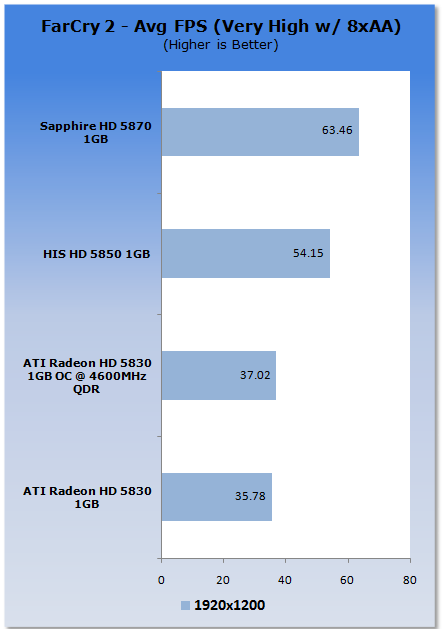
FC2 with AA and AF on isn't kind to cards and here we see all of the cards struggle including the HD 5870.
World In Conflict
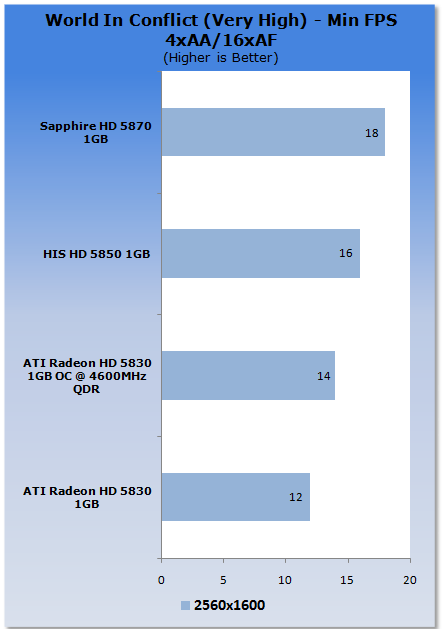
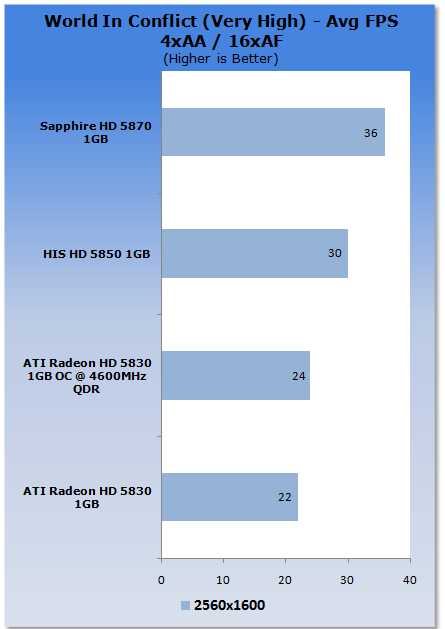
Again like FC2, WIC is quite menacing on our video cards and we see them all struggle to achieve a 30 FPS minimum.
Temperature and Sound Tests
Temperature Tests

With the TES 1326 Infrared Thermometer literally in hand we found ourselves getting real-world temperatures from the products we test at load (3D clock speeds).
There are two places we pull temperature from - the back of the card directly behind the core and if the card is dual slot and has an exhaust point we also pull a temperate from there, as seen in the picture.
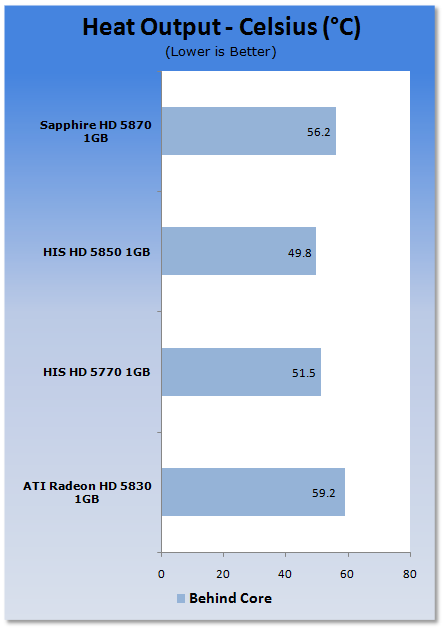
The HD 5830 runs a bit warmer here than some of the others, but it falls in between that standard 50c - 60c mark.
Sound Tests

Pulling out the TES 1350A Sound Level Meter we find ourselves quickly yelling into the top of it to see how loud we can be.
After five minutes of that we get a bit more serious and place the device two CM away from the fan on the card to find the maximum noise level of the card when idle (2D mode) and in load (3D mode).
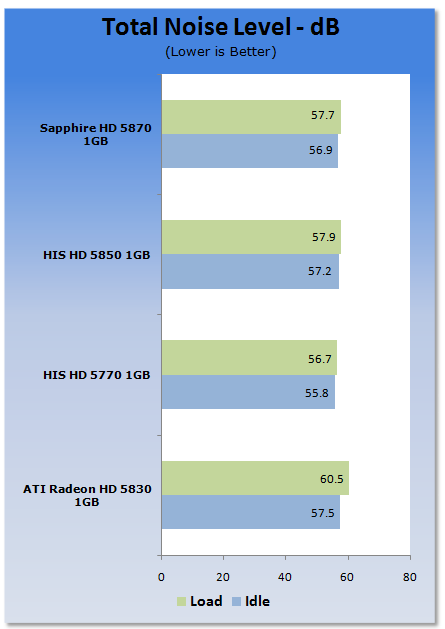
Noise levels on the HD 5830 are a little higher, but nothing to be concerned about. It pretty much sits in line with the rest of the HD 5800 series cards.
Power Consumption Tests

Using our new PROVA Power Analyzer WM-01 or "Power Thingy" as it has become quickly known as to our readers, we are now able to find out what kind of power is being used by our test system and the associated graphics cards installed. Keep in mind; it tests the complete system (minus LCD monitor, which is plugged directly into AC wall socket).
There are a few important notes to remember though; while our maximum power is taken in 3DMark06 at the same exact point, we have seen in particular tests the power being drawn as much as 10% more. We test at the exact same stage every time; therefore tests should be very consistent and accurate.
The other thing to remember is that our test system is bare minimum - only a 7,200RPM SATA-II single hard drive is used without CD ROM or many cooling fans.
So while the system might draw 400 watts in our test system, placing it into your own PC with a number of other items, the draw is going to be higher.
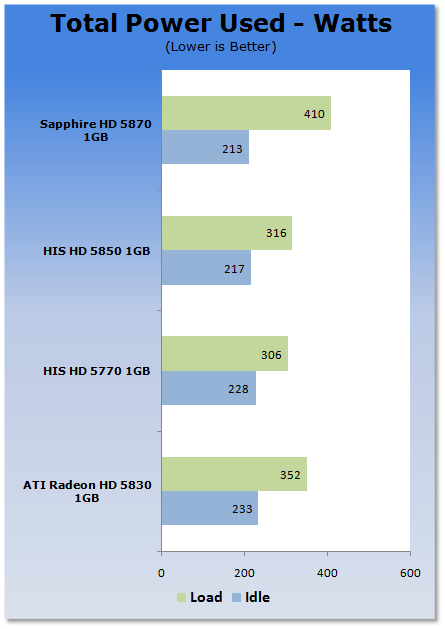
It's interesting to see that the HD 5830 was sucking a bit more power down than the HD 5850. Compared to the HD 5870, though, the load draw is almost 60 watt less. 352 Watt isn't something we would be concerned about, though.
Final Thoughts
We needed the HD 5830 for the simple reason that the HD 5770 comes in at around $150 US while the HD 5850 carries a $300 - $330 US price tag. For under $250 the HD 5830 is going to fill a gap that ATI have left open. The problem is that I don't think ATI really knew how they wanted the model to perform.
Too close to the HD 5850 and it would hurt the sales of the more expensive model. Too close to the HD 5770 in the performance department with the $250 US price tag and it would kill the value for money the card offers.
Clearly ATI intended to release the model with a 4600MHz QDR memory clock. While the extra performance is no doubt nice, I think it's safe to say that it could've been a bit too close to the HD 5850.
Who would buy this product outside of someone who has around $250 US to spend and no more? I've said many times that casual 1920 x 1200 gamers can buy a HD 5770 and have the ability to play most games these days. Casual 2560 x 1600 gamers would be better off with a HD 5850. This model as it is now lacks the grunt to play the latter, but also doesn't offer a game changing experience at 1920 x 1200 thanks to the HD 5770 being very playable at this resolution.
This is the negative side of it. But if you really think about it, there are plenty of people who would benefit from this card such as 1920 x 1200 users who want to dabble with a little bit of AA, something like 2x. It's clear that 4x AA and 16x AF is a struggle for the model, but that's fine at this resolution. Move down to 1680 x 1050 and you can really start moving those details up.
Also compared to the HD 5770, you get that extra bit of future proofing when it comes to future more intensive games. Sure the HD 5770 handles a lot of today's games at 1920 x 1200, but what about tomorrows?
The other thing is if you look at the card when the memory is overclocked, we see some really nice performance gains. I think here is where we'll see the model really shine. In saying that, we'll keep overclocking tests away until we have a retail sample on hand just to make sure we can achieve the same memory clock or higher.
The HD 5830 was a very tough model for ATI. While the pricing was easy enough to figure out, it was no doubt going to be hard to figure out exactly how much performance they should give the model. Having tested it at 4000MHz QDR and 4600MHz QDR, I think that 4200MHz QDR probably would've have been a nice number. It would've given us just a bit more bump in performance, moved it a little further away from the HD 5770 and not placed it too close to the HD 5850.
When you think about it, if retail cards can achieve a 4600MHz QDR memory clock and then get another 75MHz - 100MHz out of the core, it's going to be a real force to be reckoned with and the big overclock achieved could make the model stand out more than ATI could've hoped.
What we need to ask is; could the HD 5830 have been better? The answer in a word is Yes. BUT! It could've been better in the same way that every video card on the market could be better. Out of the box it could've been faster and the price could be cheaper. The same goes for the HD 5850, HD 5870 and every other model. What we really want to know is if ATI found the right balance for a card that's going to sit in the mid $200 range? For this question I feel myself a bit in the middle. In saying that, though, I am leaning more towards yes, they did find the balance side.
Finding the balance in a model is extremely tough. Sure the HD 5870 is easy; you make it as fast as possible. The HD 5850 which followed needs to be cheaper and perform not as well, but at the same time offering the majority of gamers a good experience. The HD 5770 was a new series but that needed to perform well enough so that it was only a series down from the HD 5800, but not perform so well that you would just buy it instead of a HD 5850.
The HD 5830 is all about finding the balance of price and performance. If you're looking at taking your 1680 x 1050 gaming experience to the next level or want to cover yourself for future game releases at 1920 x 1200, the HD 5830 is the model you want to buy, assuming that you want to spend around $250.
What we need to find out in the coming days is how do two go together and what is overclocking like on a retail sample.
The HD 5830 has a market and while it might not be as cut and dry as the HD 5770, HD 5850, HD 5870 and HD 5970, it's clearly there. You just have to look past the simple resolution table and start looking at not only what resolution you're gaming at, but what kind of detail you want.
The HD 5830 is going to be a popular model; the price is good, it lets people say they own a HD 5800 series card without spending $300 and we get the feeling there's going to be some decent OC potential here as well.
The release of this model really lets us know how much ATI love to spoil us and no doubt there are plenty of people who have got their money ready to buy this model.

